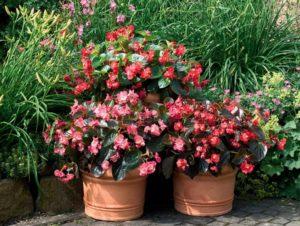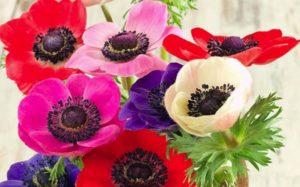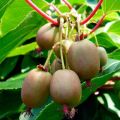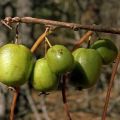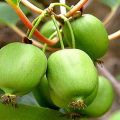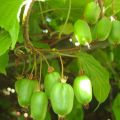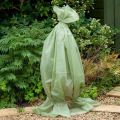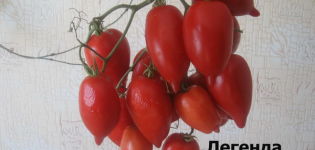Description and characteristics of the Actinidia variety Doctor Shimanovsky, planting and care
Actinidia Dr. Shimanovsky is considered one of the most frost-resistant varieties. It is perfect for central Russia, has tasty, sweet fruits, but not only this attracts gardeners. This culture has a bright leaf color that changes its shade at different times of the year. Such a plant will adorn any site.
Variety history
Actinidia kolomikta was found at the beginning of the nineteenth century. And already at the end of the century, these plants were grown in botanical gardens and individual wealthy estates. Actinidia fruits were served only to high-ranking persons.
Actinidia Dr. Szymanowski appeared thanks to a Polish breeder. The variety was named after him. In 1995, this species was introduced into trade, and already in the 2000s, it appeared in the form of seedlings on the domestic market.
Description and characteristics
Actinidia Dr. Shimanovsky is a bisexual, self-pollinating liana-like bush. Its length can be 3-4 meters. The shoots are brown, thin, smooth and shiny.
The variety has variegated foliage and juicy fruits. Flowering occurs in May or June and is represented by small white flowers. The fruits that appear ripen at the end of August. Their flesh is green with a sweet and sour taste.

Pros and cons
This plant has quite a few advantages. You can highlight the following:
- self-fertile variety that does not require pollination;
- winter hardiness;
- there is no tendency to disease;
- able to play the role of an ornamental plant;
- unpretentious care;
- healthy and tasty fruits.
This actinidia also has disadvantages:
- easy crumbling of fruits;
- uneven ripening of fruits;
- The aroma of young plants attracts cats, which gnaw the shoots and enjoy the plant sap, for them it is like a valerian.
Subtleties of planting actinidia
Actinidia kolomikta is a dioecious plant, therefore, in order for it to bear fruit, it is necessary to plant both male and female plants. The male acts as pollination, and the fruit appears on the female plant.
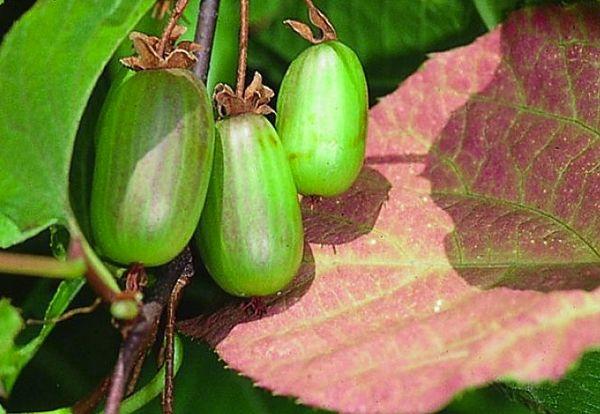
In order for 10 female vines to bear fruit, it is enough to plant only 2 male plants on the site.
Choice of time and place
Actinidia Dr. Szymanowski loves sunny areas. But still, it cannot be planted in direct sunlight, otherwise burns will appear on the leaves. She needs a light shade.
The landing site must be protected from strong winds. Better to plant on the east or west side of the house.
The best time for planting is early spring, when the ground warms up to 5-10 degrees. Moreover, in some regions of Russia it is permissible to plant actinidia in the autumn.
Purchase of seedlings
You need to buy seedlings in garden centers or special nurseries. There, the seedlings are guaranteed to have passed the control. You need to give preference to specimens that have reached 2-3 years of age. They will take root better than others. The branches of the plant should bend well, the leaves should be clean, without spots. Their presence indicates a disease of the bush.
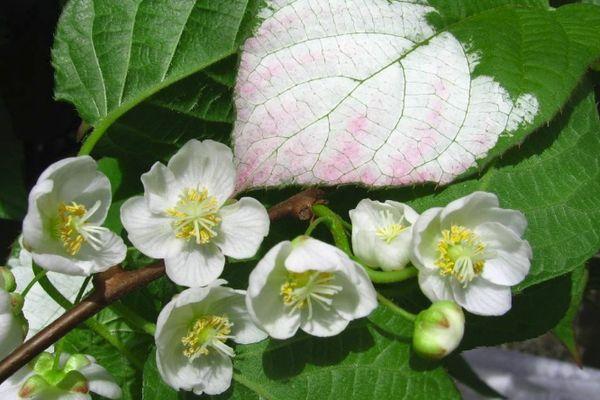
Seedlings are bought in containers. Actinidia, in particular the Doctor Shimanovsky variety, have a delicate root system. If the roots of the seedlings are under the sun or in the wind for at least 10 minutes, they can wither and even die.
Site preparation
Two weeks before the intended landing, you need to prepare the site. The soil is dug, weeds are removed and holes are dug. Their diameter should be 50-70 cm.You can dig a trench 50-60 cm deep and 50 cm wide.
A material is sent to the bottom of the pit, which will perform the function of drainage. To do this, use broken brick, pebbles, gravel or expanded clay. It is needed to prevent stagnant water. Fertile garden soil and humus are poured over the drainage. It must be at least 8 kg. You also need to add a complex of fertilizers and 200 g of ash. Only after the ground has settled down, they start planting.
Landing technology
Before planting, the seedling is kept for 30 minutes in a solution of Heteroauxin or Kornevin. This procedure will enhance root formation.
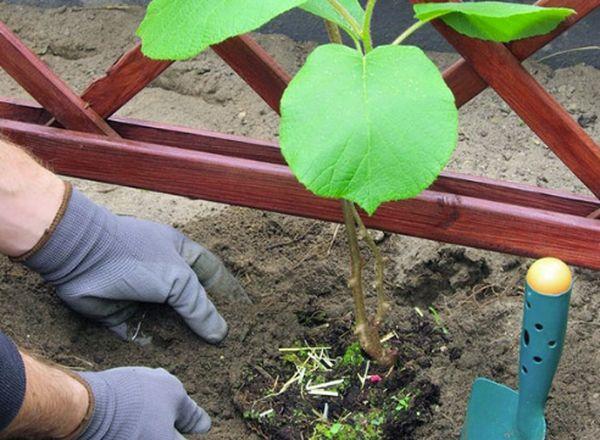
Next, the seedling is lowered into the center of the pit and covered with fertile soil, ramming it well. From above, the plant is watered and mulched. For mulch, humus, dry needles or other organic matter are suitable. For the first two weeks, actinidia should be covered with a thin cloth or paper. This is done to protect the plant that has not yet taken root from direct sunlight.
Immediately after disembarking the actinidia, Dr. Shimanovsky must be fenced off with a metal mesh, digging it into the ground. She will protect the plant from cats who are attracted by the smell of actinidia.
Nuances of culture care
The development of a plant after planting depends entirely on caring for it. He needs proper feeding, regular watering and support.
Watering, feeding and loosening
The roots of the vines do not go deep into the ground, but remain close to the surface. Therefore, it is important not to allow the soil to dry out. Water actinidia correctly using sprinkler irrigation, spraying water from a hose. The procedure is carried out in the evening. If the plant lacks moisture, it sheds foliage.
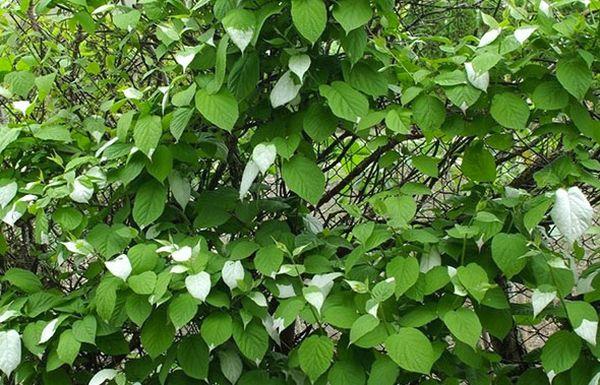
In the first 2 years of growth, actinidia does not need feeding. Then, in the spring, you need to apply a complex of fertilizers to the soil. And in early autumn, a potassium-phosphorus mixture. Mulch is also a top dressing for vines. It should be made of humus or peat.
There should be no weeds around the vines, they are removed by weeding the soil. It is not necessary to loosen the soil strongly, as there is a risk of damaging the plant's root system.
The need for support, the formation of a vine
A variety of actinidia Dr. Shimanovsky grows quite quickly, so she needs to be supported immediately after disembarkation. It must be strong and reliable. Actinidia kolomikta lives for a long time. You can plant vines along the fence, you get a beautiful hedge.
You need to start forming a vine after the 3rd year of her life on the site. Already adult vines are pruned annually by ½ of their length. The ovary is formed on the growth of previous years.
In total, 2 to 4 branches are left, which bear fruit. 2 branches of different ages for replacement and only half of the one-year growth. If the plant is more than 7 years old, anti-aging pruning should be done. Old branches thickening the plant are completely removed.
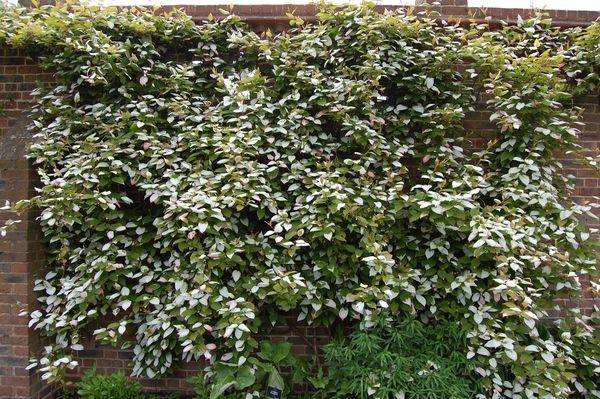
Such measures help the plant to ventilate, warm up by the sun, stop excessive growth and prevent the appearance of certain types of pests.
Preparing for winter
In the first year, the still poorly rooted plant is insulated for the winter. For this, dry leaves from trees are suitable. They cover actinidia, after putting something that scares off rodents. They will not gnaw a liana, but they will gladly build a nest in warm foliage. From above, the leaves are covered with branches or a net so that they are not carried by the wind. For insulation of actinidia, film cannot be used.
An adult plant no longer needs such insulation for the winter.
Prevention of diseases and pests
If the plants are properly cared for, they will rarely get sick. The most common diseases of actinidia are fungi, and more specifically:
- powdery mildew;
- gray and green rot;
- phyllostictosis;
- ramulariasis.
For prophylaxis in the spring, vines are sprayed with "Fitosporin" 3 times with a break of 1 week. When the flowering ends, spray with "Skor", and for the winter with Bordeaux mixture of 3%.
The most common pest is the leaf beetle. He eats the leaves, leaving only veins on them. By the end of summer, he can leave the vine completely without foliage. To avoid this, you need to treat the vines in early spring with a special solution.
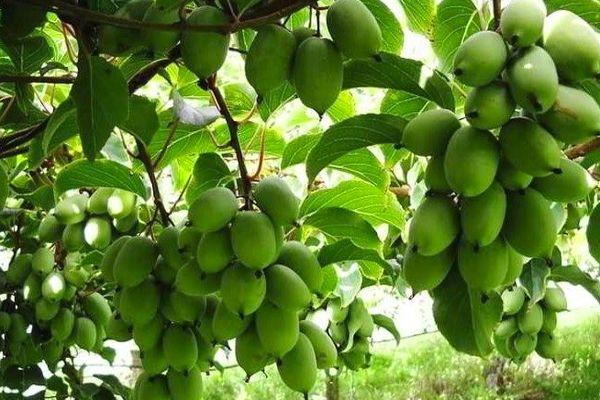
The moth caterpillars also eat the foliage, leaving large holes in it. To prevent their appearance, you need to slightly loosen the soil just before the flowering of actinidia. These actions will help destroy the caterpillar pupae.
Reproduction of culture
Most often, Dr. Shimanovsky's actinidia is propagated through layering. In the spring, when the leaves began to bloom, the young and long branch is tilted, fixed with a metal bracket and sprinkled with soil. Mulch from above. The next year, they are separated from the vines and transplanted to a permanent place.
Collection and storage
Since the crop does not ripen at the same time, the harvest is done in several passes. Ripe fruits quickly crumble, so some gardeners pick them not yet fully ripe. In this case, they need to be laid out in a thin layer in the air, where the sun's rays will not fall on them, and they will ripen.
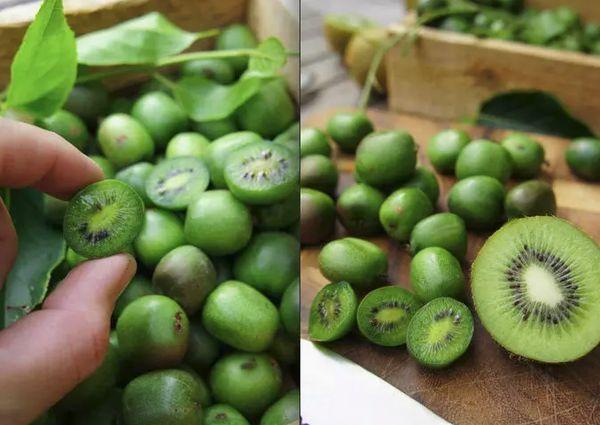
Fresh fruits are not stored for long, so they should be immediately processed or consumed.
The fruits of the described variety of actinidia Dr. Shimanovsky contain vitamin C, the amount of which is much higher than in lemon or currant. They also contain many other vitamins and nutrients. Therefore, gardeners are happy to take care of this plant, receiving delicious and very healthy fruits as a reward.
